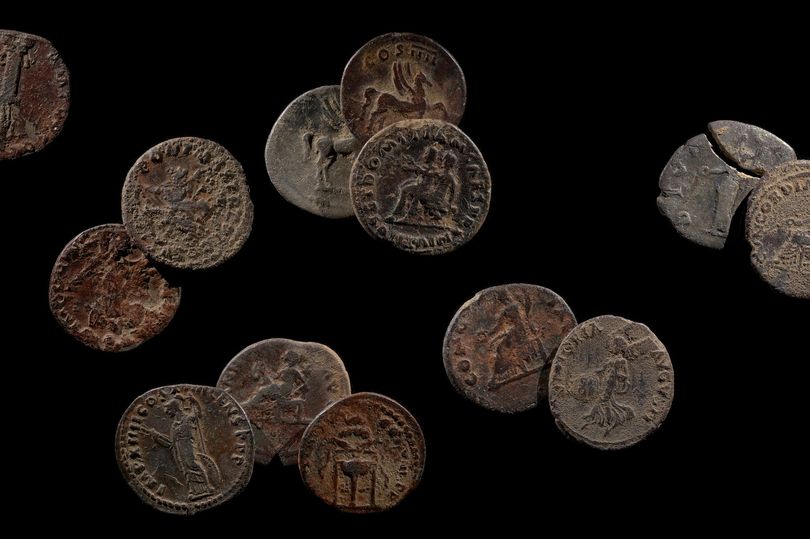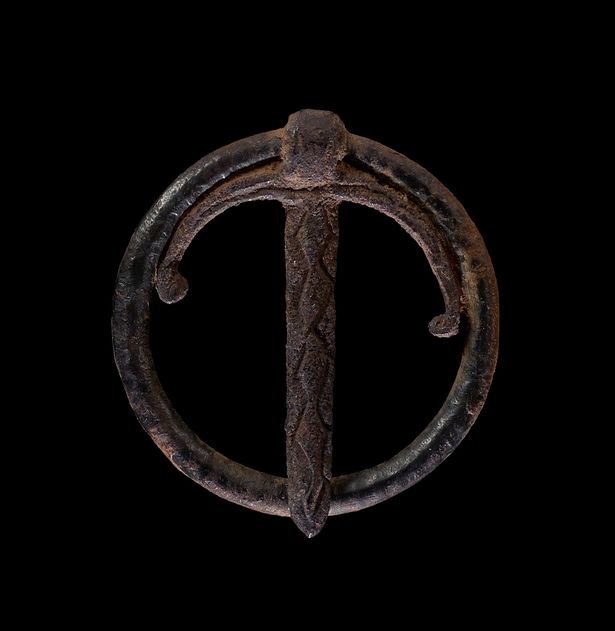Hoard of Roman Silver Coins found buried in Welsh field
Two treasure finds including a coin hoard of Roman date and a medieval silver brooch were declared treasure on 28 June 2022 by the Assistant Coroner for North Wales (East & Central) Katie Sutherland.
A Roman silver coin hoard was discovered by Wayne Jones while metal detecting on a pasture field in Halkyn Community in June 2020.
The coin hoard contains 13 silver denarii minted between AD 64 and AD 117. The first coin in the hoard is a denarius of the Emperor Nero (AD 54-68) and the last is a denarius of the Emperor Trajan (AD 98-117).

The hoard was probably buried a short time later, at around AD 117-125. Halkyn Mountain was an important Roman lead mining site.
A Roman lead pig (ingot), discovered in 2019 in Rossett, Wrexham, has been chemically linked to lead from Halkyn Mountain, and other evidence of early-Roman lead mining and smelting has been discovered in North-East Wales and at nearby Chester.
The burying of this hoard might therefore be linked to mining activities in the area.
Alastair Willis, Senior Curator of Numismatics and the Welsh Economy, Amgueddfa Cymru – National Museum Wales said:
“This coin hoard adds to a growing body of evidence for Roman activity in and around Halkyn during the first and second centuries AD, which is likely to have been primarily related to lead mining on Halkyn Mountain.”
Flintshire Museums Service would like to acquire the coin hoard for their collection, following its independent valuation by the Treasure Valuation Committee.
Sophie Fish, Museums, Culture and Heritage Manager for Flintshire said:
“This is an extremely exciting find from our Roman past. It is interesting to imagine who the coins belonged to and what goods were purchased with the currency.”
“We hope to be able to display them in Mold Museum as part of a new display on Roman activity across Flintshire.”

A small silver annular ‘stirrup’ brooch of medieval date was discovered by Scott Bevan on October 2019, whilst metal detecting on an arable field in Erbistock Community, Wrexham.
The brooch frame is decorated with fine transverse bands inlaid with black niello, a metal alloy with sulphur.
The dagger-like pin has incised decoration as well as two ‘stirrups’, curved protrusions extending at the pin-head end, which were to prevent snagging. This brooch dates from the thirteenth- or early fourteenth century.
Sian Iles, Curator of Medieval and Later Archaeology at Amgueddfa Cymru – National Museum Wales says:
“Medieval silver annular brooches like the Erbistock example are increasingly recorded in Wales, thanks to reporting through the Treasure Act 1996 and the Portable Antiquities Scheme.”
“This continual enrichment of evidence enables us to build a strong picture of the ways personal identities were being expressed Medieval Wales, through the wearing of jewellery and other personal adornments.”
Wrexham County Borough Museum & Archives is interested in acquiring the brooch for their collection, following an independent valuation by the Treasure Valuation Committee.
